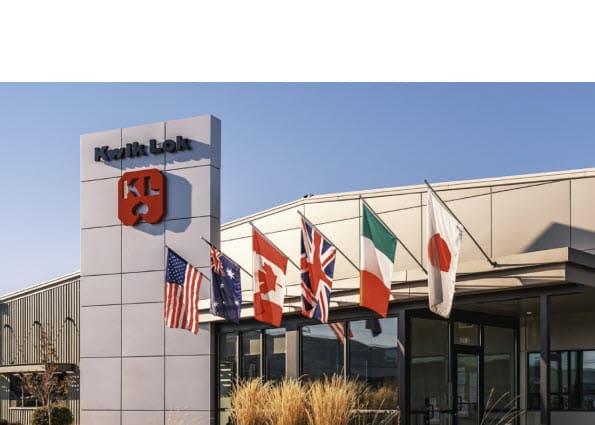Navigating Food Safety Compliance: Innovations in Traceability
The regulatory demands around product traceability in the food industry are about to get much more rigorous, but there are opportunities to mitigate the costs of compliance.
As part of the U.S Food and Drug Administration’s Food Safety Modernization Act (FSMA), a new rule concerning food traceability becomes effective in January 2026. By that time any companies involved in the production, packing, distribution, storage and sale of dozens of fresh produce items, from farmers to retailers and restaurants, will need to comply with new requirements around recordkeeping that seek to enhance the overall safety of the supply chain. The final rule implements Section 204(d) of FSMA and is often referred to as FSMA Rule 204 or simply FSMA 204.
The new requirements are meant to allow for the faster identification and removal of potentially contaminated food from the market, which in turn would help reduce foodborne illnesses and deaths. The rule requires that companies maintain records that contain Key Data Elements (KDEs) — information such as location, date, temperature, and other data — that are associated with certain Critical Tracking Events (CTEs). These CTEs are activities in the supply chain such as harvest, initial packing, shipping, receiving, and transformation of the food.
Companies must keep these records in a sortable spreadsheet format that enables them to provide information to the FDA within 24 hours. Among the KDEs is the traceability lot code (TLC), which the FDA defines as “a descriptor, often alphanumeric, used to uniquely identify a traceability lot within the records of the firm that assigned the traceability lot code.” For growers, the farm location and name of the field where a product is harvested must be captured. The TLC must be included in the record generated at each Critical Tracking Event throughout the supply chain, which will allow for a higher degree of specificity when the industry is tracking foodborne illness outbreaks and item recalls. A TLC can only be assigned when a product is initially packed, transformed or first land-based receiving is performed. The rule prohibits the reassignment of the TLC in any other step of the supply chain.
Companies are also required to maintain a traceability plan, which includes explanations about how the company’s records are kept, how foods on the list are identified, and how the company creates a TLC, among other information. “Whether you are a farmer, manufacturer, distributor, retailer, restaurant, or whatever, you are going to have to prove to FDA that you have traced and tracked the required CTEs and KDEs for your part of the value chain,” said Chris Latta, director of business development at Kwik Lok, the maker of packaging closure and labeling solutions.
The list of the first products covered by the new rule — including leafy greens and other produce — was created based on the food-safety risks they pose. The list is expected to grow to include more and more products over time, so our expectations are that all food items will be included eventually, Latta explained. Companies large and small throughout the supply chain are already taking action around the looming FSMA 204 regulation. Even companies whose products are not on the initial list — potato packers, for example — are preparing for the impact this will have on their operations, Latta said.
Mitigating the costs of compliance
The requirements of FSMA 204 will come at a cost, but companies may be able to offset those expenses with solutions that both help them comply with the requirements and at the same time drive sales and increase customer loyalty. The new rule is arriving just as the industry is preparing to transition to next-level barcodes, called 2D barcodes, that will allow companies to store much more information than the traditional, 1D barcodes that have been the industry standard for 50 years.
“The two-dimensional barcode is adding the ability to share more data,” said Lucelena Angarita, supply chain visibility director at GS1 US, the organization that coordinates industry product identification data globally. “It’s basically keeping up with the growing demands and keeping industry poised for what the next 50 years has in store.”
GS1’s identification system of Standards including Global Trade Item Numbers (GTINs) and Global Location Numbers (GLNs) are expected to play a key role in the recording of KDEs under the new rule. In addition, its Global Data Synchronization Network (GDSN) can be used to share all product description KDEs required under FSMA 204.
In addition to FSMA 204 compliance, the new 2D barcodes, including GS1 Data Matrix which have been used in the food supply chain, will also provide opportunities for improved inventory management and other potential benefits for both suppliers and retailers, Angarita said.
“You could include the location identifier or GLN where the product was manufactured” she said. “So, there is better product authentication, and greater brand trust. “
In a recent GS1 webinar, Doug Baker, VP of industry relation at FMI — The Food Industry Association, said companies should also be able to leverage the increased data they will have access to in order to increase their financial performance. For example, the specificity of the product data collected via FSMA 204 compliance should allow for more targeted product recalls, and thus less waste. The data could also be used in a range of other product and supplier analytics to help drive sales and profits.
“We don’t know all of the benefits yet,” he said. “We are learning a little bit more each day.”
As GS1 prepares for Sunrise 2027, an element of GS1’s Beyond the UPC initiative which will see retailers scanning 2D at POS by 2027, opportunities for consumers will increase as they gain easy access to a host of information through the 2D barcodes, such as a QR Code with GS1 Digital Link that points to a website. Consumers will be able to access content such as nutrition and allergen information, for example, in addition to information about sourcing.
“All these things can be carried by a 2D barcode to gain that trust and that transparency that consumers are demanding today,” said Angarita.
She suggested that companies seeking to learn more about compliance with FSMA 204 and enhancing the returns on their investment work closely with their partners in the supply chain. Information about both FSMA 204 and Sunrise 2027 are available at https://www.gs1us.org
Building brand loyalty
Kwik Lok is currently holding conversations with its customers in the supply chain about how they can use 2D bar codes to both store product lot numbers as required by FSMA 204, as well as provide additional brand and product information for consumers. That will represent an evolution of the capabilities that Kwik Lok already provides through its bag closure and labeling solutions, and it also opens up more opportunities for its partners to build brand loyalty by providing product information that customers are looking for, such as information about packaging sustainability or recycling options.
“We’re looking at a real shift in how people market things when it comes to 2D barcoding,” said Latta. “We’re going to be able to link together the grower, the packer, the retailer and the consumer into a unified experience. That’s a unique value proposition in a low-margin environment like produce.
“We believe that monetarily, this is going to work out in favor of brands down the line,” he said.
Kwik Lok also collaborates with several third-party software partners to integrate its printing and bagging technologies into comprehensive, end-to-end solutions for the market.
“Our approach goes beyond working with supply chain stakeholders,” said Latta. “We’re also partnering with the essential technology providers they rely on daily to ensure optimized operations, FDA reporting, and more.”
These partnerships include third-party companies that handle everything from data security to reporting, he explained. Kwik Lok has the labeling systems and expertise in place to not only support its partners’ compliance efforts, Latta said, but to leverage those efforts beyond their value in ensuring food safety in the supply chain. For more information, visit https://www.kwiklok.com/produce/





